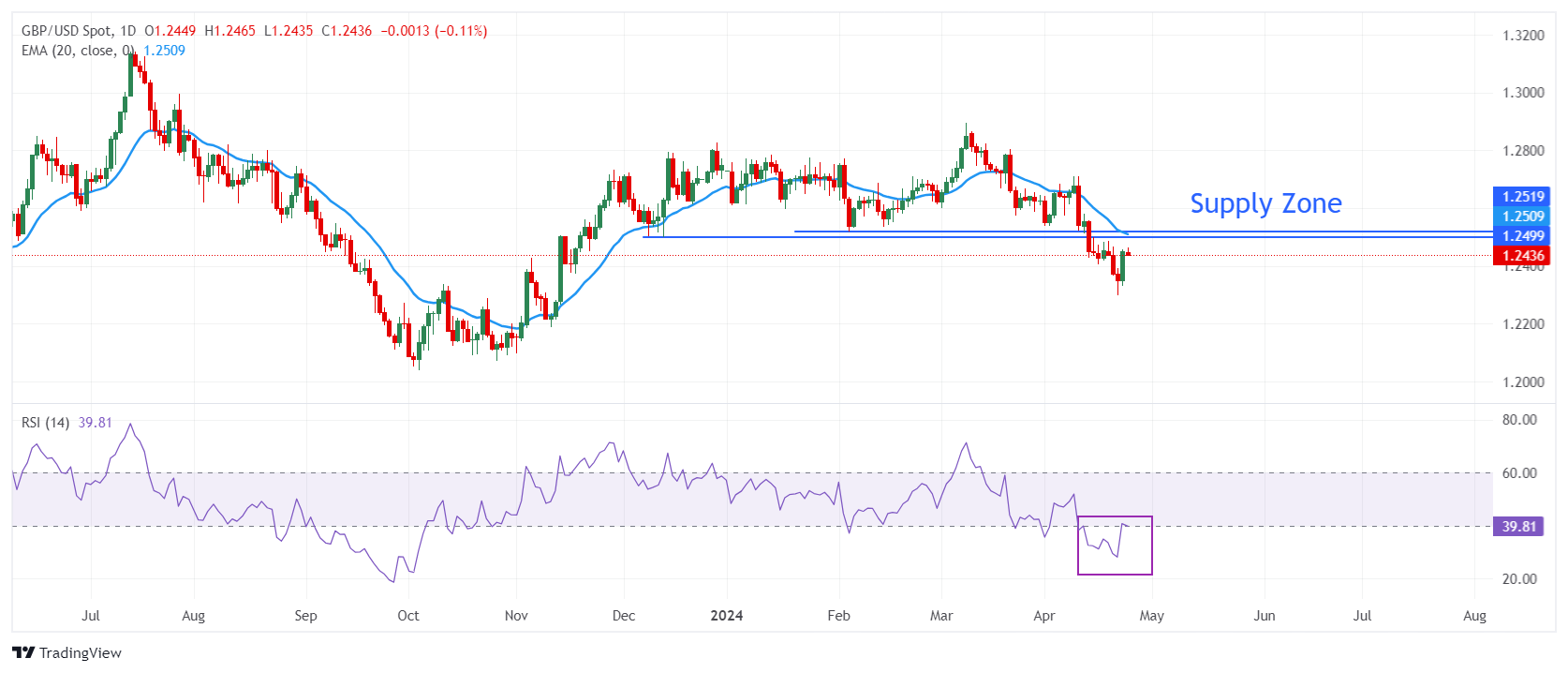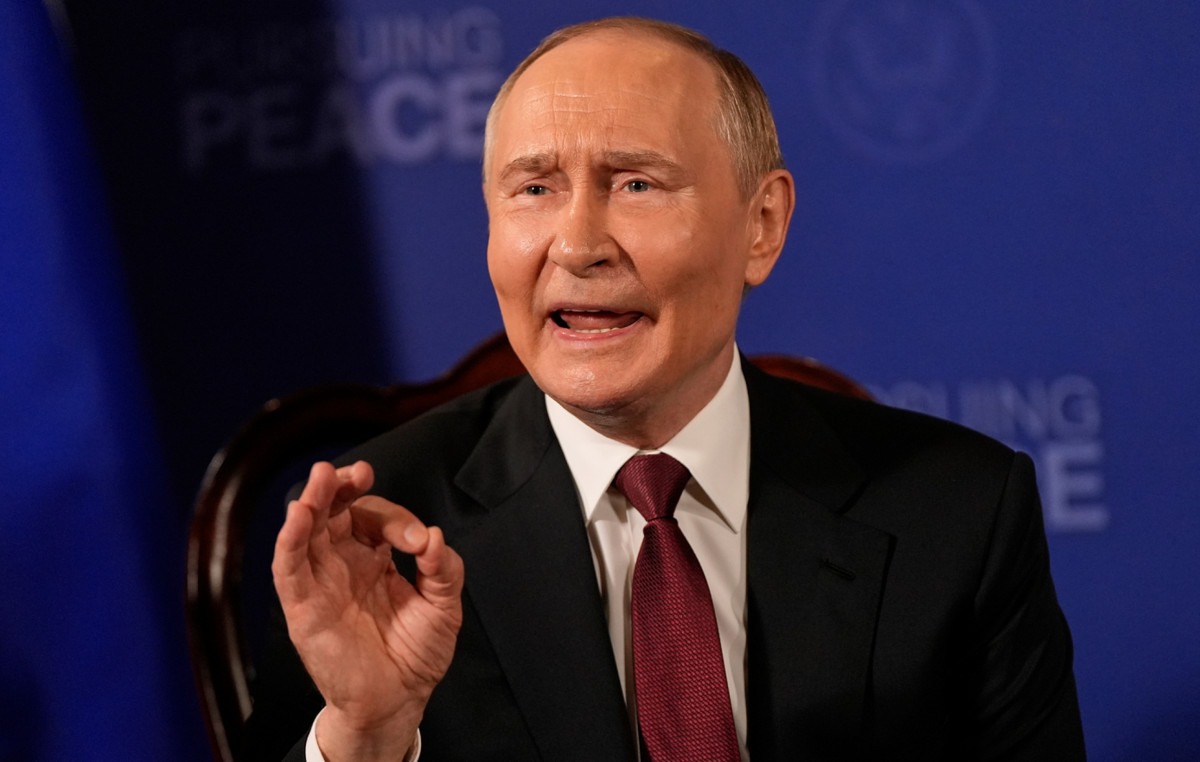- The British pound struggles to maintain the recovery, boosted by the upbeat preliminary S&P Global/CIPS PMI report for April.
- Investors are speculating that the BoE may lean toward cutting rates at its June or August meeting.
- BoE Haskel wants to see more slack in labor demand to gain confidence that inflation will sustainably return to the 2% target.
The British pound (GBP) moves sideways around 1.2450 against the US dollar (USD) in the early stages of the American session on Wednesday, after bouncing strongly from a five-month low around 1.2300. The GBP/USD pair struggles to find direction, while the US Dollar consolidates after Tuesday's sharp correction. The US Dollar Index (DXY), which measures the value of the Dollar against six major currencies, is trying to settle firmly near 105.70. Furthermore, uncertainty over the BoE's rate cut schedule has slowed the British pound's recovery.
On Tuesday, the dollar came under pressure after S&P Global surprised with weak preliminary US PMI numbers for April. The manufacturing PMI fell below the 50.0 threshold, signaling a contraction in the sector, and the services PMI fell sharply to 50.9.
In the same session, sterling rose strongly after S&P Global/CIPS released a strong preliminary UK PMI for the month of April. Surprisingly, the services PMI rose to 54.9 from the previous reading of 53.1. Investors had forecast a slight drop in the services PMI to 53.0 points. In contrast, the preliminary manufacturing PMI surprisingly fell below the 50.0 threshold that separates expansion from contraction, having been in expansion territory since January. The manufacturing PMI fell sharply to 48.7, compared to expectations and the previous reading of 50.3.
The agency also showed that new business volumes increased across the private sector as a whole in April. “The pace of growth was the strongest since May 2023, but the expansion was focused on the service economy as manufacturers recorded a moderate decline in their order books.”
The strong volume of new business usually indicates an optimistic outlook for consumer spending, which could boost inflationary pressures and allow the Bank of England (BoE) to delay interest rate cuts. This scenario bodes well for the British pound.
Daily Market Summary: Sterling Struggles to Prolong Recovery
- The British Pound fails to rally above 1.2450 as expectations of an early rate cut by the Bank of England offset the impact of the upbeat S&P Global/CIPS PMI report.
- Although a rate cut is expected by the BoE before that by the Federal Reserve (Fed), traders remain divided between the monetary policy meetings in June and August as the start of the relaxation cycle. “James Smith, economist at ING Financial Markets, says: 'If services inflation is a little bit stronger, I think the balance will tip a little more towards August than June, but the balance is quite close.'
- Furthermore, the various comments from BoE policymakers maintain uncertainty over the timing of the first BoE interest rate cut. Last week, BoE deputy governor Dave Ramsden said inflation could fall at a faster rate than the central bank predicted in its latest forecasts. Ramsden remains confident that inflation will return to the 2% target in May and remain there for the next three years.
- In contrast, BoE policy chief Jonathan Haskel is concerned that inflation will remain persistent due to tense labor market conditions. Haskel stated: “The labor market is critical to the inflation aspect,” adding that he wants to see the labor market relax further to be confident that inflation will return to the 2% target, Reuters reported.
Technical Analysis: Sterling Recovery Stalls Near 1.2450

The British Pound is recovering strongly from a five-month low of 1.2300 against the US Dollar. The GBP/USD pair rose to 1.2450 on Tuesday and remains around this level at the time of writing. The rise is limited near the supply zone, located in a tight range of 1.2500-1.2520. The Pound's short-term outlook remains weak as the 20-day EMA at 1.2509 is turning lower.
The 14-period RSI bounces to 40.00, which could act as a ceiling going forward. A bullish reversal could be speculated if the momentum oscillator decisively breaks above 40.00.
BoE FAQ
What does the Bank of England do and how does it impact the Pound?
The Bank of England (BoE) decides the UK's monetary policy. Its main objective is to achieve price stability, that is, a constant inflation rate of 2%. Its instrument to achieve this is the adjustment of basic loan rates. The BoE sets the rate at which it lends to commercial banks and at which banks lend to each other, determining the level of interest rates in the wider economy. This also influences the value of the British Pound (GBP).
How does the Bank of England's monetary policy influence the Pound Sterling?
When inflation exceeds the Bank of England's target, it responds by raising interest rates, which makes access to credit more expensive for citizens and companies. This is positive for the British Pound, as higher interest rates make the UK a more attractive place for global investors to invest their money. When inflation falls below target, it is a sign that economic growth is slowing, and the Bank of England will consider lowering interest rates to make credit cheaper in the hope that companies will borrow to invest in projects that generate growth, which is negative for the Pound sterling.
What is Quantitative Easing and how does it influence the Libra?
In extreme situations, the Bank of England can apply a policy called Quantitative Easing (QE). QE is the process by which the BoE substantially increases the flow of credit into a clogged financial system. QE is a policy of last resort when lowering interest rates does not achieve the necessary result. The process of QE involves the Bank of England printing money to buy assets, typically government bonds or AAA-rated corporate bonds, from banks and other financial institutions. QE usually results in a weakening of the British pound.
What is Quantitative Hardening and how does it influence the British Pound?
Quantitative tightening (QT) is the reverse of QE, and is applied when the economy is strengthening and inflation begins to rise. While in QE the Bank of England (BoE) buys government and corporate bonds from financial institutions to encourage them to lend, in QT the BoE stops buying more bonds and stops reinvesting the maturing principal of the bonds that you already own. It is usually positive for the British pound.
Source: Fx Street
I am Joshua Winder, a senior-level journalist and editor at World Stock Market. I specialize in covering news related to the stock market and economic trends. With more than 8 years of experience in this field, I have become an expert in financial reporting.







